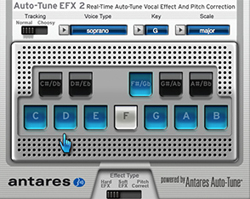Auto-Tune is the process we love to hate.
To most older (or shall we say “classic”) engineers and producers, it’s avoided like the plague, preferring to work the singer until he gets it right. Of course, no one complains when it’s used on that one note that just can’t be comped.
Then there’s T-Pain, who took Auto-Tune to a new level, using it as a integral piece of his act by using it on literally every song. It was bad enough when Cher did it way back in 1998 on her hit “Believe,” when we thought the fad was over.
Not so, apparently.
But perhaps the real story is that Auto-Tune was that it was accidentally invented by an Exxon scientist while interpreting seismic data using sound waves. The researcher was Andy Hildebrand, who was using audio to map elements deep below the earth’s surface, which means basically looking for oil.
To his credit, Hildebrand, who loves music, determined that his method could be used to help singers everywhere, and so he founded Antares Audio Technologies in 1990. The rest is history.
Great singers still don’t need or want it, but mediocre singers, engineers and producers everywhere live by it. In fact, many big touring acts actually use it live on stage. If that’s not cheating, I don’t know what is. Perhaps Auto-Tune is another reason to hate the oil industry?
Here’s an interesting and amusing video on the history of Auto-Tune:
Bobby Owsinski is an author, producer, music industry veteran and technical consultant who has written numerous books covering all aspects of audio recording. For more information be sure to check out his website and blog.






















